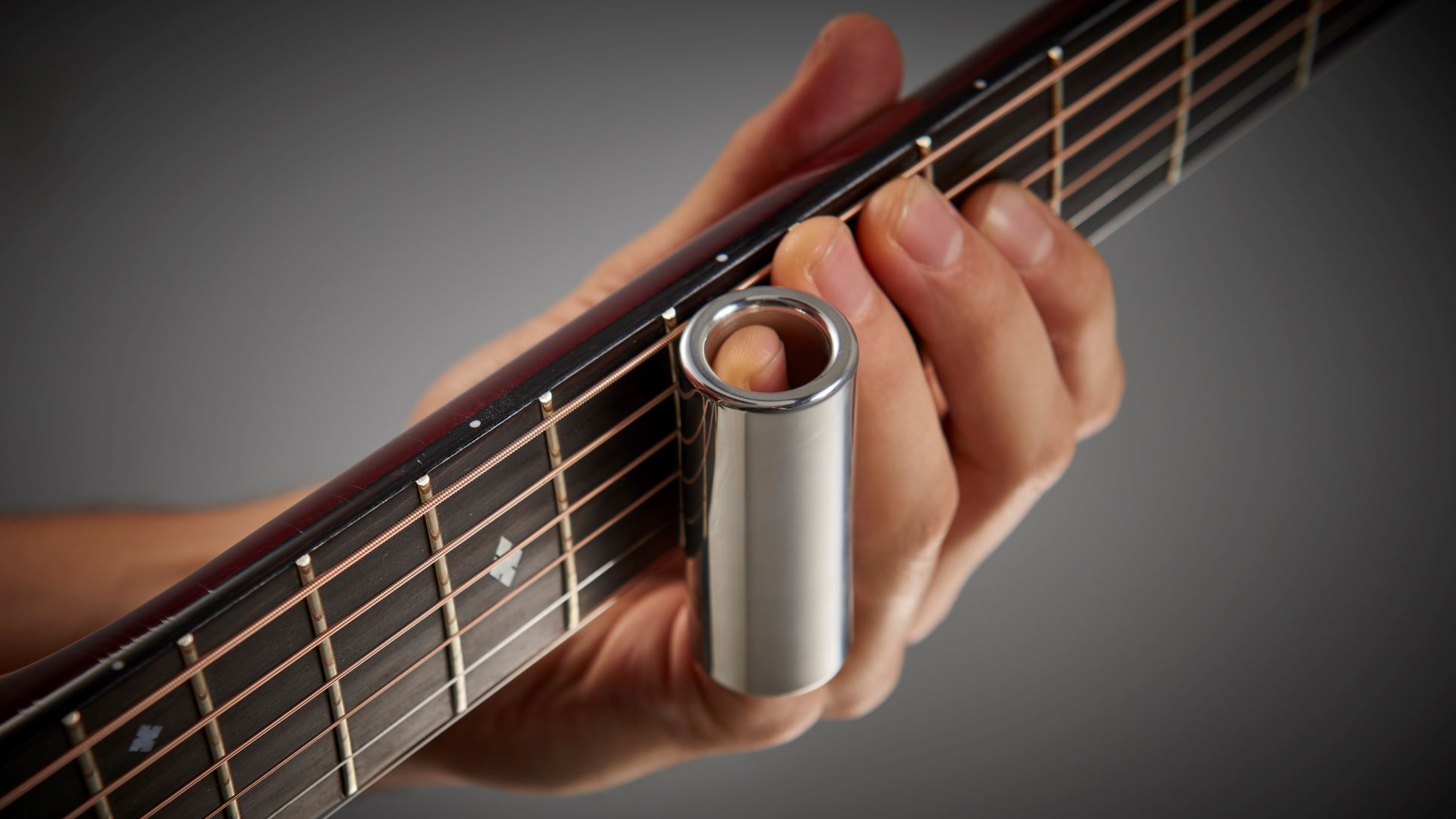Acoustic Blues Musings, Part 3: Open Roots Tuning Tips
These essential tunings are the keys to slide blues success.

Playing in standard tuning will only get you so far along the blues guitar trail. Three primary reasons why blues players favor open tunings are that they simplify fretboard navigation, make any acoustic guitar sound more resonant and facilitate bottleneck slide.
A basic grasp on how to play in rootsy open tunings is essential to have in your arsenal for the classic blues canon, and a whole lotta folky blues-rock to boot.
Here’s the what-up broken down into a few principles...
Root Chord Theory
The core concept is tuning to a chord, and E best exemplifies it. To get a handle, start by forming a basic E major chord in standard open position. Notice that the fingers are simply raising the pitch of the fourth and fifth strings by a whole step plus a half step on the third. Take the fingers off and turn the tuning keys to raise the pitches to where the fingers were. Voilà, open E tuning.
Duane Allmans’s “Little Martha” is a lovely acoustic example of open E’s chimey tone caused by increasing string tension rather than decreasing it, like the majority of open tunings.
Vestapol
From open E, lower every string a whole step to discover a resonant D major tuning, also known as Vestapol. The word is derived from the historic battle song “The Siege of Sevastopol,” which was eventually boiled down to “Vestapol.” The song is in D, and the designation is most often used for open D, but it may also be used to reference open E or any slightly lowered or raised version of the same intervallic relationship.
Blind Willie McTell’s original “Statesboro Blues” recording is in C#. Old tape recordings can be slightly fast or slow, and classic blues cats didn’t use digital tuners, so use your ears. Fingerings remain the same regardless of the root pitch.
Spanish String Theory
Open G is the primary blues tuning with the root on the fifth string, which can cause confusion because the lowest note, D, is on the slackened sixth string. From there it’s straightforward from strings five to one: G D G B D.
Check out Son House’s “Death Letter Blues” for a blueprint example. Ry Cooder is credited with showing it to Keith Richards, who made it his signature sound and often ditched the sixth string. Give a listen to Keef’s acoustic blues on “Country Honk,” from 1969’s Let It Bleed, which is essentially a southern send-up of “Honkey Tonk Woman.”
Open G is also known as Spanish tuning, or Taro Patch in Hawaiian slack-key style, and once again the intervallic relationship is paramount. Raise or lower the tuning globally and the relationship remains consistent, so you can elevate it to A for a John Lee Hooker-style boogie, or drop it a full step as Jimmy Page did to thump out “Bron-Y-Aur Stomp.” The fingerings remain the same. Apply a capo in the first five or so frets to milk any tuning for more keys without requiring a retune.
Open-C Change
Large guitars with long scale lengths might accommodate a bellowing Vestapol-style C, but for most it’s too deep a dive, so the following tuner moves are required to get into a bluesy C with robust bass and nearly standard treble strings. From standard, drop the sixth string two whole steps, to C. Drop the fifth and fourth strings a whole step, to G and C, respectively. Tweak the second string up a half step, to C. Leave the third and first strings alone at G and E.
The result is, from low to high, C G C G C E. It’s not as much of a classic blues tuning as it is classic rock and contemporary folk. Page used it for Led Zeppelin’s “Friends,” and Swan Song labelmate Mick Ralphs used it for Bad Company’s “Moving On.” Leo Kottke uses this open C for “Standing in My Shoes,” on which he wields a slinky slide.
All of the tunings mentioned are actually fantastic slide platforms, and we’ll delve into that next time.
Further reading...
Get The Pick Newsletter
All the latest guitar news, interviews, lessons, reviews, deals and more, direct to your inbox!
Jimmy Leslie has been Frets editor since 2016. See many Guitar Player- and Frets-related videos on his YouTube channel, and learn about his acoustic/electric rock group at spirithustler.com.
“Write for five minutes a day. I mean, who can’t manage that?” Mike Stern's top five guitar tips include one simple fix to help you develop your personal guitar style
"It’s like you’re making a statement. And you never know where it’ll lead." Pete Thorn shares the tip that convinced Joe Satriani he was the right guitarist for the SatchVai Band










